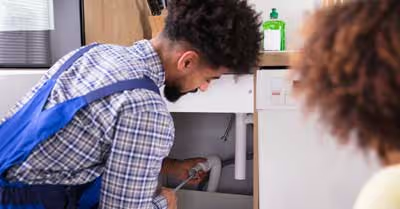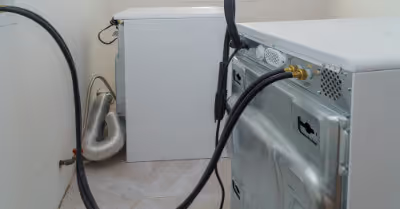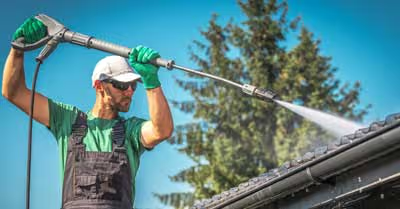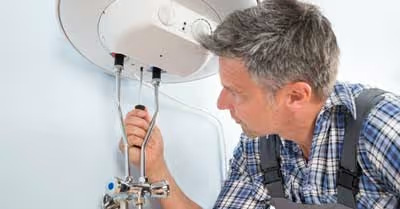Table of Contents
Identify Mold and Mildew
Mildew and mold are both fungi that love humid environments. They can both cause damage to you and your home. They share some features so a lot of people misidentify them.
Mildew
Mildew is white, gray, or even yellow in color. It looks powdery or fluffy and grows on the surface of wet areas like shower walls. Since it only grows on the surface of an area, it is easier to remove than mold.
Over time, mildew can turn dark brown or even black. When inhaled, mildew can cause respiratory problems like a cough and a sore throat. It can also cause headaches.
Types of Mildew
There are two types of mildew:
- Downy mildew starts off as yellow spots that are often on produce. Over time downy mildew gets darker and turns brown.
- Powdery mildew is white or gray at first. As it grows it gets darker and turns yellow or even brown and black. This type is usually found on flowering plants.
If your fungi is growing flat against the surface and does not appear fuzzy, you probably have mildew. This is good because it is easier to remove. All you need is a strong cleaner and a scrub brush. Make sure you clean the entire area to ensure the fungus does not return.
Mold
Mold grows in patches and can infect the interior of areas, not just the surface like mildew. This makes it harder to get rid of. Mold protrudes away from a surface and appears slimy or fuzzy. Mold can be many different colors including yellow, green, gray, white, black, brown, and even blue.
Mold commonly grows on wood and drywall because the fungus “eats” cellulose that is found in these building materials. Mold, like mildew, liked humid and warm places.
Types of Mold
There are over 10,000 species of mold, but some are more common in house. This chart covers the most common types of mold, their appearance, where it grows, and any health issues it can cause.
How To Get Rid of Mold
When dealing with any mold, it is important to take the necessary safety precautions. Wear an N-95 respirator mask and properly dispose of any materials. It is best to double bag anything that may have had contact with the mold so that the spores do not escape and re-infest your home. You can also turn off your air conditioner or heater to prevent blowing spores into the room.
Also, use a pump sprayer to spray down areas. This prevents the spores from spreading as much.
Remove Carpet
First, you need to remove all of the carpet and dispose of it properly. Carpet is a safe haven for mold and spores that can spread it or regrow it after you finish. You need to make sure to double bag the carpet so that spores do not escape while you take it out.
It is easier if you cut small squares, 4x4 foot or so, and bag them to remove. This makes the process manageable. Remember to spray water on it to keep the spores contained.
Seal the Area
It is important to completely seal off the room or rooms that have any mold. Cover all entry ways including vents and ducts with plastic sheeting. Use duct tape to seal it on all sides.
Open Affected Walls
To ensure that all mold is removed, you have to get inside the walls. Use a pry bar to remove the baseboards and trims in all of the contaminated areas. You can then use a screwdriver to poke the wall. This will help you locate moist or damaged areas.
It is a good idea to remove as much wall as you need to to find all of the mold. This shouldn’t be a problem since you will have to fix the wall anyway.
To avoid damaged electrical wires you can look into holes that you poke into damaged areas. Find the wires and go avoid them. If you have to cut around outlets, it is best to turn off the power.
To prevent the spores from contaminating other surfaces and areas, use a pump sprayer to wet down the walls and other materials. Always double bag any pieces of wall before removing them from the area.
Cleaning and Repairing
Depending on how long the mold has been growing, you may have rot. You should replace any soft studs with new ones.
Now you need to sweep and vacuum the entire contaminated area. A standard wet/dry vacuum works just fine. Make sure you dispose of the filter when you are done. You should also wash out the tank and wipe down the vacuum and hoses with a mixture of water and bleach.
Clean and Remove Mold
To kill the fungus, you can use a bleach and water solution. Use ½ cup bleach and a quart of water. Brush all areas with any signs of contamination. Scrub until all signs of mold have vanished.
When you are done, do not rinse the solution away. Instead, just wipe it off. You can lay trim out in the sun to dry.
Dehumidify and Replace Drywall
Now, set up a dehumidifier in the room or rooms for 3 to 4 days. After at least 3 days, check for any signs of mold. If you see or suspect mold, clean it again with bleach solution.
When you are positive that the area is mold free use shellac or primer to seal all the wood surfaces. When you install new drywall and insulation, remember that moisture is mold’s best friend.
Prevent Mold
The first step to preventing mold is to locate all areas that have an environment that mold likes. This means primarily moist and humid areas of your home. Then if you can reduce the moisture, do so. This could be as simple as replacing a leaky faucet or removing carpet in a humid area so that mold doesn’t easily find a home.
You can also reduce your chances of mold by regularly drying wet areas such as shower walls. Also, do not leave wet clothes in the washing machine. Mold cannot grow without water, so limiting the water limits the mold.
You can also use mold-resistant drywall and other materials. If you are replacing drywall in a wet area like the laundry room or bathroom, use mold-resistant materials to prevent future nuisances, costs, and hassles.
Another thing that increases your chance of mold are damaged or blocked gutters. Repair and clean out gutters often.
Last, mold likes your house plants. You water them and mold likes the moist soil. Then, the mold can spread throughout your home. You can buy Taheebo tea at a natural or health food store. Add this to your plant’s water to prevent mold.
Recent Articles
















